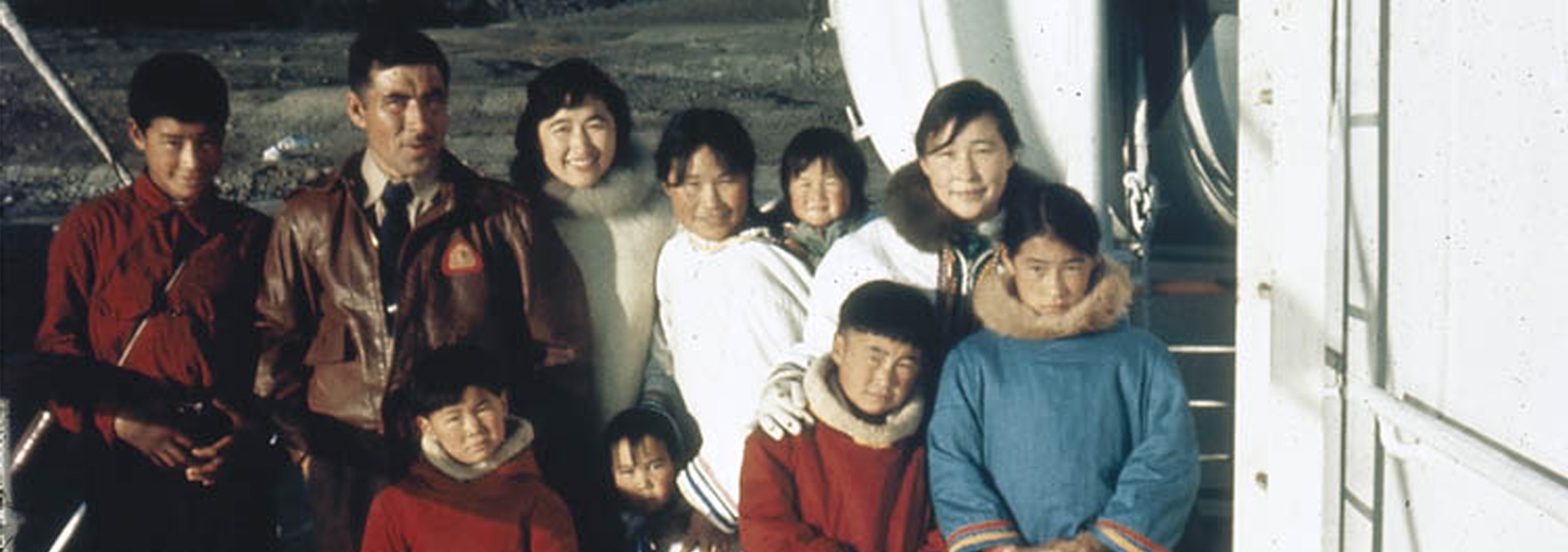Historically, Inuit used a simple tent, known as a tupiq (the plural form is tupiit), while travelling or hunting during the summer months. Today, the traditional tupiq is rarely used (because modern variations have largely replaced it), but some Inuit elders and communities are working to keep the tupiq, and other Inuit traditions, alive. (See also Architectural History of Indigenous Peoples in Canada.)

Inuit family in front of a tupiq, circa 1915.
What’s a Tupiq?
While igloos provided shelter for Inuit families and hunters during the winter, the tupiq provided Inuit with a summer dwelling. Warm summers were a time for active hunting and fishing, which caused the community to become mobile. The tents’ portability allowed hunters to follow their prey. The tupiq was the perfect portable structure for these activities.
Overtime, the traditional tupiq was phased out of common use as Europeans introduced different tent versions as well as more permanent housing structures.
How is a Tupiq Made?
The covers of the tent were sewn from skins of seal, caribou or other animals. The skins were supported on poles, often made of whalebone. The edges of the tupiq were weighted down with rocks. Firepits — used for cooking and for warmth — were located outside. (See also Country Food (Inuit Food) in Canada.)
DID YOU KNOW?
In 2009, Inuk artist Shuvinai Ashoona showcased the tupiq in a contemporary piece of art entitled, Aujaqsiut Tupiq. (See also Inuit Art and Contemporary Inuit Art.)
Variations in Form
The Inuit along the Labrador coast, as well as some central groups, built tents with a connected cone-shaped rear portion and a triangular entrance area. The layout of the entrance and circular living space is similar to the plan of the igloo.
The form of the tupiq varied among groups. The Iglulingmuit tupiq was a simple structure, not unlike the pup tent of today. (A pup tent is small and triangular, usually with room for only one or two people.) The tupiq of the Belcher Islands Inuit, in Hudson Bay, was cone-shaped with a central smoke-hole, similar to the tipi traditionally used by Plains Indigenous peoples in Canada.
Modern Significance
The tupiq is a traditional structure, but it holds cultural significance to the Inuit in the present-day. Indigenous building forms like the tupiq are part of traditional knowledge systems. While the traditional tupiq is rarely used (because modern variations have largely replaced it), some Inuit elders are working to keep tupiq-making traditions alive. In 2017, seamstresses in Pond Inlet, Nunavut, prepared seal skins to be used in a reproduction of the traditional tupiq.

 Share on Facebook
Share on Facebook Share on X
Share on X Share by Email
Share by Email Share on Google Classroom
Share on Google Classroom






